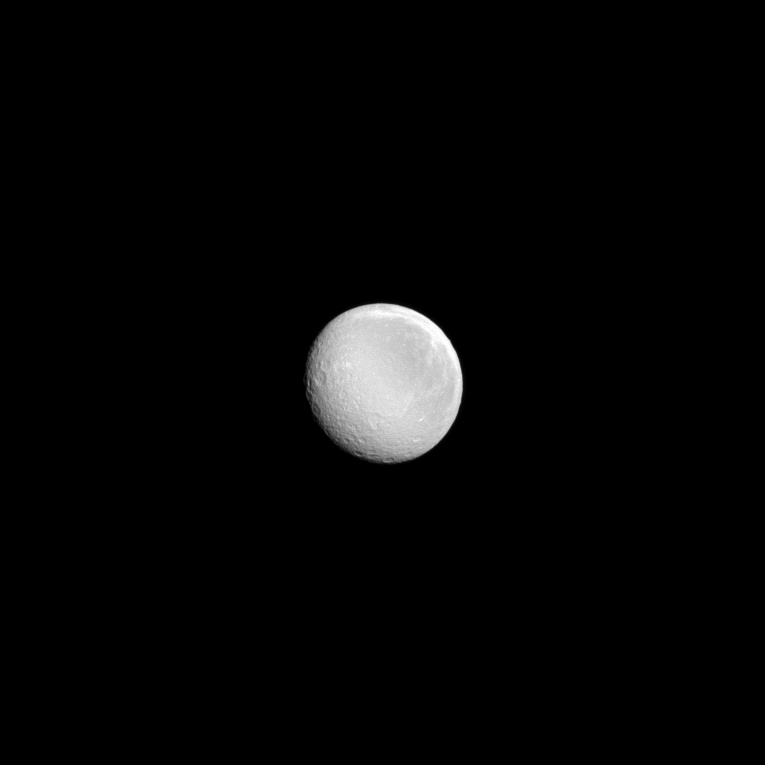Saturn's Full Moon: Rhea Shines Bright for Cassini

This newly-released observation of Saturn's second largest moon could be mistaken for our own moon hanging in the night sky. Although it may lack the tell-tail Mare Imbrium (Sea of Showers) or famous Tycho Crater, the rocky surface of Rhea is still pockmarked with craters that etch its ancient surface with solar system history. The Saturn-facing hemisphere is almost totally bathed in sunlight.
Rhea is 949 miles (1,527 kilometers) wide, less than half the size of our moon, which measures 2,159 miles (3,475 kilometers) wide. Snapped by Cassini's narrow-angle camera on Sept. 10, 2013, the Saturn-orbiting spacecraft was approximately 990,000 miles (1.6 million kilometers) from Rhea. [See more amazing photos of Rhea, Saturn's 2nd Largest Moon]
More from Cassini:
- Cassini Snaps Breathtaking Photo of Saturn
- Cassini Photographs Saturn’s Stunning Hexagon
- Cassini’s Festive Tour of Spectacular Saturn: Photos
This story was provided by Discovery News.
Breaking space news, the latest updates on rocket launches, skywatching events and more!
Ian O'Neill is a media relations specialist at NASA's Jet Propulsion Laboratory (JPL) in Southern California. Prior to joining JPL, he served as editor for the Astronomical Society of the Pacific‘s Mercury magazine and Mercury Online and contributed articles to a number of other publications, including Space.com, Space.com, Live Science, HISTORY.com, Scientific American. Ian holds a Ph.D in solar physics and a master's degree in planetary and space physics.
